
CC BY 4.0 License ABS Digital Atlas of Australia
Australia, known for its vast landscapes and unique wildlife, is also home to a relatively small population compared to its land size. With a population of approximately 26 million people, Australia has a population density of around 3 people per square kilometre. This low population density is due to the country’s large land area, which spans over 7.6 million square kilometres. Despite this, studying population density in Australia is of great importance as it provides insights into various social, economic, and environmental issues that affect the country.
Summary
- Australia has a relatively low population density compared to other developed countries.
- Population density is the number of people living in a given area, and it has significant social, economic, and environmental implications.
- Factors affecting population density in Australia include geography, climate, infrastructure, and economic opportunities.
- Population density varies greatly across different regions of Australia, with major cities having much higher densities than rural areas.
- Urbanisation and rural-urban migration are major drivers of population density shifts in Australia, with implications for housing, transportation, and social services.
Understanding Population Density and Its Significance
Population density refers to the number of individuals living in a specific area, usually measured in terms of people per square kilometre. It is an important metric for understanding the distribution of people within a country or region. By studying population density, researchers and policymakers can gain insights into various social, economic, and environmental issues.
From a social perspective, population density can provide insights into the availability and accessibility of social services such as healthcare, education, and transportation. Higher population densities often require more infrastructure and services to meet the needs of the population. Additionally, population density can also impact social cohesion and community dynamics. In areas with high population density, there may be greater diversity and interaction among individuals, leading to vibrant communities.
From an economic perspective, population density can influence economic activity and development. Higher population densities often lead to increased economic opportunities as there is a larger consumer base and potential labour force. This can attract businesses and investment, leading to economic growth. On the other hand, low population densities can present challenges for economic development as there may be limited markets and resources.
From an environmental perspective, population density can have significant impacts on natural resources and ecosystems. High population densities can lead to increased pressure on land, water, and other natural resources. This can result in habitat destruction, pollution, and depletion of resources. Understanding population density can help identify areas where environmental conservation efforts are needed and inform sustainable development practices.
Population Density Of Australia By City
below is a table displaying the estimated population density of major Australian cities:
| City | Population Density (people per sq km) | Population | Source |
|---|---|---|---|
| Sydney | 441 | 5,312,163 | ABS |
| Melbourne | 521 | 5,078,193 | ABS |
| Brisbane | 148 | 2,189,878 | ABS |
| Perth | 315 | 2,043,138 | ABS |
| Adelaide | 400 | 1,345,777 | ABS |
| Canberra | 503 | 456,692 | ABS |
| Gold Coast | 452 | 679,127 | ABS |
| Newcastle | 423 | 322,278 | ABS |
| Wollongong | 405 | 307,477 | ABS |
Key Observations
- Melbourne has the highest overall density among major Australian cities, reflecting its centralized urban layout.
- Brisbane and Perth have lower densities due to their sprawling metropolitan areas and less concentrated populations.
- Sydney combines a large population with moderate density, influenced by its expansive suburban regions.
For more detailed or updated statistics, consulting the Australian Bureau of Statistics (ABS) is recommended.
Factors Affecting Population Density in Australia
Population density in Australia is influenced by a combination of natural and human factors.
Natural factors such as climate, topography, and availability of resources play a significant role in determining population density. Australia’s climate is characterized by extremes, with large areas experiencing arid or semi-arid conditions. This limits the availability of water and agricultural land, making it challenging for large populations to settle in these areas. The coastal regions, on the other hand, have more favorable climates and access to resources, resulting in higher population densities.
Human factors such as migration and urbanization also contribute to population density patterns in Australia. Migration, both internal and international, has played a significant role in shaping Australia’s population density. Historically, migration from Europe and Asia has contributed to population growth in urban areas, particularly in cities like Sydney and Melbourne. Urbanization, the process of people moving from rural areas to cities, has also led to higher population densities in urban centres.
Regional Variations in Population Density Across Australia
Australia exhibits significant regional variations in population density. The majority of the population is concentrated along the eastern and southeastern coasts, particularly in major cities such as Sydney, Melbourne, and Brisbane. These regions have favourable climates, access to resources, and economic opportunities, resulting in higher population densities.
In contrast, the interior regions of Australia, known as the Outback or the Bush, have very low population densities. These areas are characterized by arid or semi-arid conditions, making it challenging for large populations to settle. The lack of infrastructure and services further limits the attractiveness of these regions for settlement.
Regional variations in population density can be attributed to a combination of natural factors such as climate and topography, as well as human factors such as migration patterns and economic opportunities. The concentration of population in certain regions has implications for resource allocation, infrastructure development, and regional planning.
Urbanisation and Its Impact on Population Density
Urbanization refers to the process of people moving from rural areas to cities. It is a global phenomenon that has significant implications for population density. In Australia, urbanization has played a major role in shaping population density patterns.
Australia is one of the most urbanized countries in the world, with approximately 85% of the population living in urban areas. This high level of urbanization has led to increased population densities in cities and metropolitan regions. Cities like Sydney, Melbourne, and Brisbane have experienced rapid population growth due to migration and natural increase.
The impact of urbanization on population density is evident in the growth of urban areas and the expansion of city boundaries. As more people move to cities, there is a need for increased housing, infrastructure, and services to accommodate the growing population. This can lead to higher population densities in urban areas as land is developed more intensively.
Examples of urbanization in Australia can be seen in the growth of suburbs and the development of new residential areas on the outskirts of cities. These areas often experience higher population densities as they are designed to accommodate a larger number of people within a smaller land area.
Rural-Urban Migration and Population Density Trends
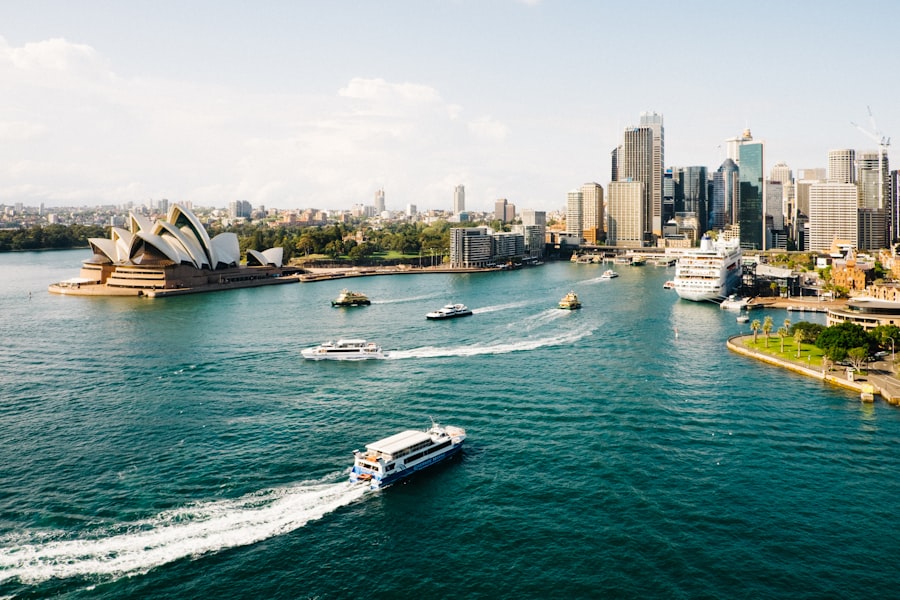
Rural-urban migration refers to the movement of people from rural areas to cities. It is a significant factor contributing to population density trends in Australia.
Over the past few decades, Australia has experienced a trend of rural-urban migration, with more people moving from rural areas to cities in search of better economic opportunities, education, and healthcare. This has resulted in higher population densities in urban areas and lower population densities in rural areas.
The impact of rural-urban migration on population density can be seen in the decline of small rural towns and the growth of cities and metropolitan regions. As people move away from rural areas, the population density decreases, leading to challenges in maintaining infrastructure and services in these areas. On the other hand, cities and metropolitan regions experience increased population densities, putting pressure on existing infrastructure and services.
The trend of rural-urban migration has implications for regional planning and resource allocation. It highlights the need for policies and initiatives that promote balanced regional development and provide incentives for people to stay in rural areas.
Demographic Changes and Population Density Shifts
Demographic changes, such as changes in birth rates, death rates, and migration patterns, can have significant impacts on population density. In Australia, demographic changes have contributed to shifts in population density patterns.
Australia has experienced a decline in birth rates over the past few decades, resulting in an aging population. This demographic shift has implications for population density as older individuals tend to have lower population densities compared to younger populations. This is because older individuals often live in smaller households or retirement communities, which can lead to lower population densities in certain areas.
Migration patterns also contribute to demographic changes and population density shifts. Australia has a long history of migration, with waves of immigrants from Europe, Asia, and other parts of the world. These migration patterns have influenced population density patterns, particularly in urban areas where migrants tend to settle.
Examples of demographic changes in Australia can be seen in the growth of multicultural communities and the aging population. These changes have implications for social cohesion, healthcare services, and resource allocation.
Economic and Social Implications of High Population Density
High population density can have both economic and social implications. In Australia, cities with high population densities often experience economic growth and increased economic opportunities.
Cities like Sydney and Melbourne have vibrant economies with diverse industries and a large consumer base. The high population densities in these cities attract businesses and investment, leading to job creation and economic growth. Additionally, high population densities can also lead to increased productivity and innovation as there is a larger pool of talent and ideas.
From a social perspective, high population densities can lead to increased social interaction and cultural diversity. Cities with high population densities often have vibrant cultural scenes, with a wide range of restaurants, shops, and entertainment options. This can contribute to a sense of community and social cohesion.
However, high population densities can also present challenges. The strain on infrastructure and services can lead to congestion, overcrowding, and increased competition for resources. Housing affordability can also be a concern in areas with high population densities, as demand often outstrips supply.
Environmental Challenges of High Population Density
High population density can have significant environmental challenges. In Australia, these challenges are particularly evident in areas with high population densities such as cities and coastal regions.
One of the main environmental challenges of high population density is the increased pressure on natural resources. As more people live in a specific area, there is greater demand for water, energy, and food. This can lead to overexploitation of resources, depletion of water sources, and increased pollution.
High population densities also contribute to urban sprawl and the loss of natural habitats. As cities expand to accommodate growing populations, natural areas such as forests and wetlands are often cleared for development. This can result in habitat destruction, loss of biodiversity, and fragmentation of ecosystems.
Additionally, high population densities can also contribute to increased pollution and waste generation. The concentration of people in urban areas leads to higher levels of air pollution, water pollution, and waste production. This can have negative impacts on human health and the environment.
Future Projections and Policy Implications for Australia’s Population Density
Future projections for Australia’s population density indicate that it will continue to increase, albeit at a slower rate compared to previous decades. The Australian Bureau of Statistics projects that the population will reach 30 million by 2031, with most of the growth occurring in major cities and urban areas.
Managing population density in Australia requires a comprehensive approach that takes into account social, economic, and environmental factors. Policies and initiatives should focus on promoting balanced regional development, improving infrastructure and services in rural areas, and encouraging sustainable urban planning.
Investments in public transportation, affordable housing, and renewable energy can help alleviate the challenges associated with high population densities. Additionally, policies that promote sustainable resource management, conservation of natural areas, and reduction of pollution can help mitigate the environmental impacts of high population density.
In conclusion, studying population density in Australia is crucial for understanding the social, economic, and environmental dynamics of the country. It provides insights into regional variations, urbanization trends, demographic changes, and the implications of high population density. By understanding these factors, policymakers can develop strategies and policies that promote sustainable development and improve the quality of life for all Australians.
FAQs
What is population density?
Population density is the measure of the number of people living in a particular area, usually expressed as the number of people per square kilometre.
What is the population density of Australia?
As of 2021, the population density of Australia is approximately 3.3 people per square kilometre.
How does Australia’s population density compare to other countries?
Australia has one of the lowest population densities in the world, with only a few countries having a lower population density, such as Mongolia, Namibia, and Iceland.
What are the reasons for Australia’s low population density?
Australia’s low population density can be attributed to its vast size, harsh climate, and relatively small population. The majority of the population is concentrated in urban areas along the coast, leaving large areas of the country sparsely populated.
Which areas of Australia have the highest population density?
The highest population densities in Australia are found in the major cities along the east coast, such as Sydney, Melbourne, and Brisbane. The Australian Capital Territory also has a relatively high population density due to its small size and high concentration of government and administrative offices.
What are the implications of Australia’s low population density?
Australia’s low population density has both advantages and disadvantages. On the one hand, it allows for a high quality of life and access to natural resources. On the other hand, it can make it difficult to provide services and infrastructure to remote areas, and can limit economic growth and development.
Australian History: History of Australia
Australia, known for its stunning landscapes and unique wildlife, has a rich and complex history that spans thousands of years. From the arrival of the Aboriginal Australians, the first inhabitants of the continent, to the British colonisation and the establishment of the Commonwealth of Australia, the country’s past has shaped its present and future. Understanding Australia’s history is crucial for appreciating its diverse culture, political system, and social dynamics. In this article, we will delve into the key events and turning points in Australian history, exploring their impact on the nation’s identity and development.SummaryAboriginal Australians were the first inhabitants of Australia, with a rich and diverse culture that dates back tens of thousands of years.Captain Cook’s arrival in 1770 marked the beginning of British colonisation, which would have a profound impact on the continent and its people.The Gold Rush of the 1850s was a turning point in Australian history, bringing wealth and prosperity but also social and political upheaval.The Eureka Stockade of 1854 is remembered as a symbol of Australian democracy, as miners rebelled against unfair working conditions and demanded greater representation.Federation in 1901 saw the birth of the Commonwealth of Australia, a new nation with its own constitution and government. Aboriginal Australians: The First Inhabitants of AustraliaBefore the arrival of European settlers, Australia was home to a diverse range of Aboriginal cultures and languages. It is estimated that Aboriginal Australians have inhabited the continent for at least 65,000 years. These indigenous peoples had a deep connection to the land and lived in harmony with nature. They had complex social structures, rich spiritual beliefs, and a deep understanding of...
Water Bodies Of Australia: Lakes, Rivers and Seas of Australia
Australia is home to a diverse range of water bodies, including rivers, lakes, seas, and oceans. These water bodies play a crucial role in the country’s ecosystem, supporting a wide variety of plant and animal life. They also provide important resources for various industries, such as tourism, agriculture, and maritime activities. In this article, we will explore some of Australia‘s most iconic water bodies and discuss their significance to the country. Summary Australia is home to a diverse range of water bodies, including rivers, lakes, seas, and oceans. The Great Barrier Reef is one of Australia’s most iconic natural wonders, known for its stunning coral formations and diverse marine life. The Murray River is the longest river in Australia, spanning over 2,500 kilometers and supporting a range of ecosystems and communities. Lake Eyre is Australia’s largest salt lake, located in the arid outback and known for its unique wildlife and stunning landscapes. The Tasman Sea separates Australia and New Zealand, and is an important shipping route and fishing ground for both countries. The Great Barrier Reef: Australia’s Iconic Coral Sea The Great Barrier Reef is one of Australia’s most famous natural wonders. Stretching over 2,300 kilometers along the Queensland coast, it is the largest coral reef system in the world. The reef is home to a vast array of marine life, including over 1,500 species of fish and 600 types of coral. The Great Barrier Reef is not only a natural wonder but also a major tourist attraction. It attracts millions of visitors each year who come to explore its vibrant coral gardens and swim with its diverse marine...
Cultural or Historical Sites Of Australia: Important Cultural Landmarks or Historical Sites In Australia
Australia is a country known for its rich cultural and natural heritage. From iconic landmarks to ancient sites, Australia offers a diverse range of attractions that showcase its unique history and beauty. These sites are not only important for preserving the country’s past, but also for promoting tourism and contributing to the economy. In this article, we will explore some of Australia’s most significant cultural and natural sites, including the Sydney Opera House, Uluru-Kata Tjuta National Park, the Great Barrier Reef, the Royal Botanic Garden, the Port Arthur Historic Site, the National Gallery of Victoria, the Australian War Memorial, the Old Melbourne Gaol, the National Museum of Australia, and the Daintree Rainforest. Summary The Sydney Opera House is a world-renowned cultural icon of Australia. Uluru-Kata Tjuta National Park is a sacred site of Aboriginal culture and spirituality. The Great Barrier Reef is a natural wonder and historical site with a rich marine biodiversity. The Royal Botanic Garden is a historical landmark of Sydney with a diverse collection of plants. The Port Arthur Historic Site is a symbol of Australia’s convict past and a popular tourist destination. The Sydney Opera House: A Cultural Icon of Australia The Sydney Opera House is perhaps one of the most recognizable landmarks in Australia. Designed by Danish architect Jørn Utzon, it was officially opened in 1973 and has since become a symbol of Australian culture and creativity. The Opera House is not only renowned for its architectural design but also for the wide range of cultural events and performances it hosts. The design of the Sydney Opera House is characterized by its distinctive...
Australia’s Major Natural Resources: Exploring Mineral Resources, Mines, and Economic Power
Australia’s Major Natural Resources: Exploring Mineral Resources, Mines, and Economic Power Australia is a land rich in opportunity, quite literally. From the dusty plains of Western Australia to the rugged terrain of South Australia, the nation is blessed with a wealth of natural resources. It stands tall on the global stage as a leading exporter of mineral resources, boasting world-class mines, massive iron ore deposits, and abundant natural gas reserves. This blog post is a deep dive into Australia’s natural resource landscape—exploring its vast mineral wealth, the dynamics of its powerful mining industry, and how these resources shape the Australian economy. Whether you’re a student, researcher, investor, or simply curious about Australian mining, this article offers valuable insights into one of the world’s richest lands beneath the soil. Article Outline What Makes Australia Rich in Natural Resources? How Important is Iron Ore to the Australian Economy? Where Are the Major Uranium Deposits in Australia? What Role Does Natural Gas Play in Australia’s Energy Mix? Exploring Australia’s Copper and Zinc Reserves Why is Bauxite Crucial to Australia’s Mining Sector? How Valuable Are Australia’s Mineral Sands? The Role of Queensland and New South Wales in Mining What Is the Status of Nickel and Lithium Mining in Australia? What Are the Environmental and Economic Challenges Facing the Mining Industry? 1. What Makes Australia Rich in Natural Resources? Australia’s natural resources are the result of millions of years of geological processes that created rich mineral deposits across the continent. This includes a wide variety of metal ores, energy resources, and industrial minerals. From iron ore to natural gas, bauxite to uranium, the country...
Political Boundaries Of Australia: Provinces, Districts, or Historical Boundaries.
Australia is a vast and diverse country, with a complex system of political boundaries that play a crucial role in its governance. Understanding these boundaries is essential for comprehending the political landscape of the country and how power is distributed among its various regions. This article will provide a comprehensive overview of political boundaries in Australia, including the provinces and districts that make up its governance structure. By delving into the historical evolution of these boundaries and examining their impact on modern-day Australia, we can gain a deeper understanding of the challenges and prospects for political boundaries in the country. Summary Australia is divided into six states and two territories, each with their own political boundaries. The provinces of Australia are further divided into districts, which play a significant role in local governance. The historical evolution of Australia’s political boundaries has been shaped by colonialism, federation, and Indigenous sovereignty. Political boundaries in Australia play a crucial role in the distribution of power and resources, and can impact social and economic outcomes. Maintaining political boundaries in Australia can be challenging due to factors such as population growth and changing community needs. Provinces of Australia: A Brief Overview Provinces, also known as states or territories, are the primary political divisions in Australia. There are six states – New South Wales, Queensland, South Australia, Tasmania, Victoria, and Western Australia – and two mainland territories – the Australian Capital Territory (ACT) and the Northern Territory. Each province has its own government and is responsible for various aspects of governance within its jurisdiction. New South Wales is the oldest and most populous state in...
Climate Zones Of Australia: Different Climate Regions Of Australia
Australia is a vast and diverse country, known for its unique wildlife, stunning landscapes, and extreme weather conditions. The country is home to a wide range of climate zones, each with its own distinct characteristics and weather patterns. Understanding these climate zones is crucial for various reasons, including agriculture, tourism, and environmental conservation. Summary Australia has eight climate zones, each with unique features and characteristics. The tropical climate zone in Australia is characterized by high temperatures, high humidity, and heavy rainfall. The subtropical climate zone in Australia experiences mild winters and hot summers, with occasional droughts and bushfires. The Mediterranean climate zone in Australia is known for its mild, wet winters and hot, dry summers, and is home to unique vegetation such as eucalyptus forests. The desert climate zone in Australia covers a large portion of the country and is characterized by low rainfall, high temperatures, and unique flora and fauna adapted to the harsh conditions. Tropical Climate Zone in Australia: Features and Characteristics The tropical climate zone in Australia is located in the northern part of the country, covering areas such as Queensland and the Northern Territory. This region experiences high temperatures and humidity throughout the year, with distinct wet and dry seasons. The wet season, also known as the monsoon season, brings heavy rainfall and occasional cyclones. The vegetation in the tropical climate zone is lush and diverse, with rainforests being a prominent feature. The wildlife in this region is also unique, with species such as kangaroos, wallabies, and various bird species being commonly found. Subtropical Climate Zone in Australia: Climate and Weather Patterns The subtropical climate...
Terrain and Topography Of Australia: Mountains, Valleys, and Plains in Australia.
Australia is a vast and diverse country, known for its unique and varied terrain. From the rugged mountains of the Great Dividing Range to the barren wilderness of the Nullarbor Plain, Australia‘s geography plays a crucial role in shaping its climate, environment, and culture. Understanding the terrain and topography of Australia is essential for various purposes, including tourism, agriculture, and environmental management. Summary Australia’s terrain is diverse and dynamic, with a range of landscapes from mountains to deserts to coastal plains. The Great Dividing Range is the longest mountain range in Australia, stretching over 3,500 km. The Australian Alps are the highest mountains in Australia, with Mount Kosciuszko reaching 2,228 metres. The Western Plateau is a vast and arid landscape, covering over two-thirds of the country. The Murray-Darling Basin is Australia’s most important agricultural region, producing over one-third of the country’s food. The Great Dividing Range: Australia’s Longest Mountain Range The Great Dividing Range is a significant geographical feature that stretches over 3,500 kilometers along the eastern coast of Australia. It is the longest mountain range in the country and plays a crucial role in shaping Australia’s geography and climate. The range acts as a natural barrier, separating the coastal regions from the inland areas. It influences rainfall patterns, with the eastern side receiving more rainfall than the western side. The Great Dividing Range is home to several popular tourist destinations. The Blue Mountains, located just outside of Sydney, offer stunning views, deep valleys, and ancient rock formations. The Snowy Mountains, located in New South Wales and Victoria, are a popular destination for skiing and snowboarding during the winter...
Discovering Australia: A Journey Through the Land Down Under
Australia, the world’s sixth-largest country, is a land of incredible diversity and natural beauty. Located in the southern hemisphere, it is surrounded by the Indian and Pacific Oceans, with stunning coastlines stretching for thousands of kilometers. The country is known for its unique wildlife, vibrant cities, and breathtaking landscapes. From the iconic Sydney Opera House to the vast Outback, Australia offers a wide range of experiences for travelers. Tourism plays a significant role in the Australian economy, contributing billions of dollars each year. The country attracts millions of visitors who come to explore its natural wonders, experience its rich culture, and enjoy its warm hospitality. With its diverse range of attractions and activities, Australia has something to offer every type of traveler. Key Takeaways Australia is a diverse and beautiful country with a rich indigenous culture and unique wildlife. Understanding and respecting the culture of the First Australians is an important part of experiencing Australia. The Great Barrier Reef is the world’s largest coral reef system and a must-see destination for any traveler. The Outback is the heart of Australia and offers a unique and rugged landscape to explore. Meeting kangaroos, koalas, and other Australian wildlife is a highlight of any trip to Australia. Indigenous Culture: Understanding the First Australians Australia’s Indigenous culture is one of the oldest living cultures in the world, dating back over 65,000 years. The Aboriginal people have a deep connection to the land and have a rich history and heritage that is still celebrated today. Understanding and experiencing Aboriginal culture is an important part of any visit to Australia. There are many ways to...
Australia
Australia (Commonwealth of Australia) Capital: Canberra Population (Estimated July 2017): 23,232,413 Area: 7,702,501km2 or 2,973,952mi2 Currency: Australian Dollar ($A) Official Language: English Political Information: Federal Parliamentary State Official Religion: No Official Religion (approximately 27.4% of the population are Protestant, 25.8% are Roman Catholic, 10.6% have other Christian beliefs, 2.1% are Buddhist, 1.7% are Muslim, 13.7% have unspecified or other religious beliefs and 18.7% have no religious beliefs) Highest Mountain: Mount Kosciuszko at 2,229m or 7,313ft GDP Official Exchange Rate (OER is more precise at gauging a countries economic power) (Estimated 2017): $1.39 trillion (US$) or £1.04 trillion (GBP) GDP (OER) Per Capita (per member of the population estimated 2017): $49,755 (US$) or £37,279(GBP) GDP Purchasing Power Parity (PPP is good for gauging living conditions and use of resources but not as accurate as OER. This data has been calculated based on the sum value of all goods and services produced in the country valued at prices prevailing in the United States) (Estimated 2017): $1.235 trillion (US$) or £930 billion (GBP) GDP (PPP) Per Capita (per member of the population estimated 2017): $49,000 (US$) or £36,710 (GBP) Time Zone (GMT/UTC): +10:00 Counties/Provinces/States: Australian Capital Territory, New South Wales, Northern Territory, Queensland, South Australia, Tasmania, Victoria, Western Australia Dependencies: Ashmore and Cartier Islands, Christmas Island, Cocos (Keeling) Islands, Coral Sea Islands, Heard Island and McDonald Islands, Macquarie Island, Norfolk Island Leaders: Queen of Australia ELIZABETH II (since 6 February 1952); represented by Governor Gen. Sir Peter COSGROVE (since 28 March 2014); Prime Minister Malcolm TURNBULL (since 15 September 2015) Sources: CIA World Fact Book, Encyclopaedia Britannica,...




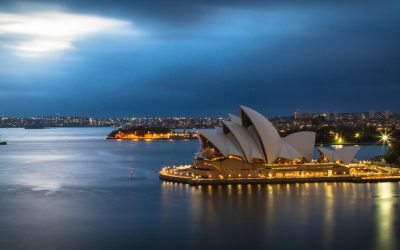
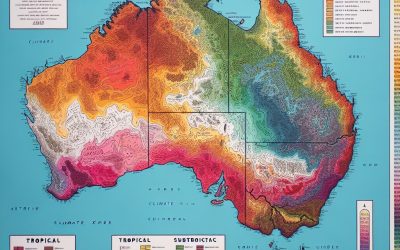
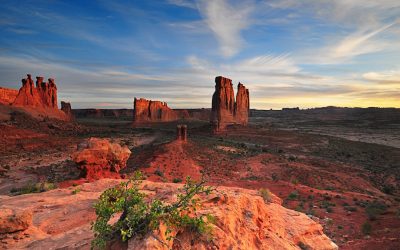


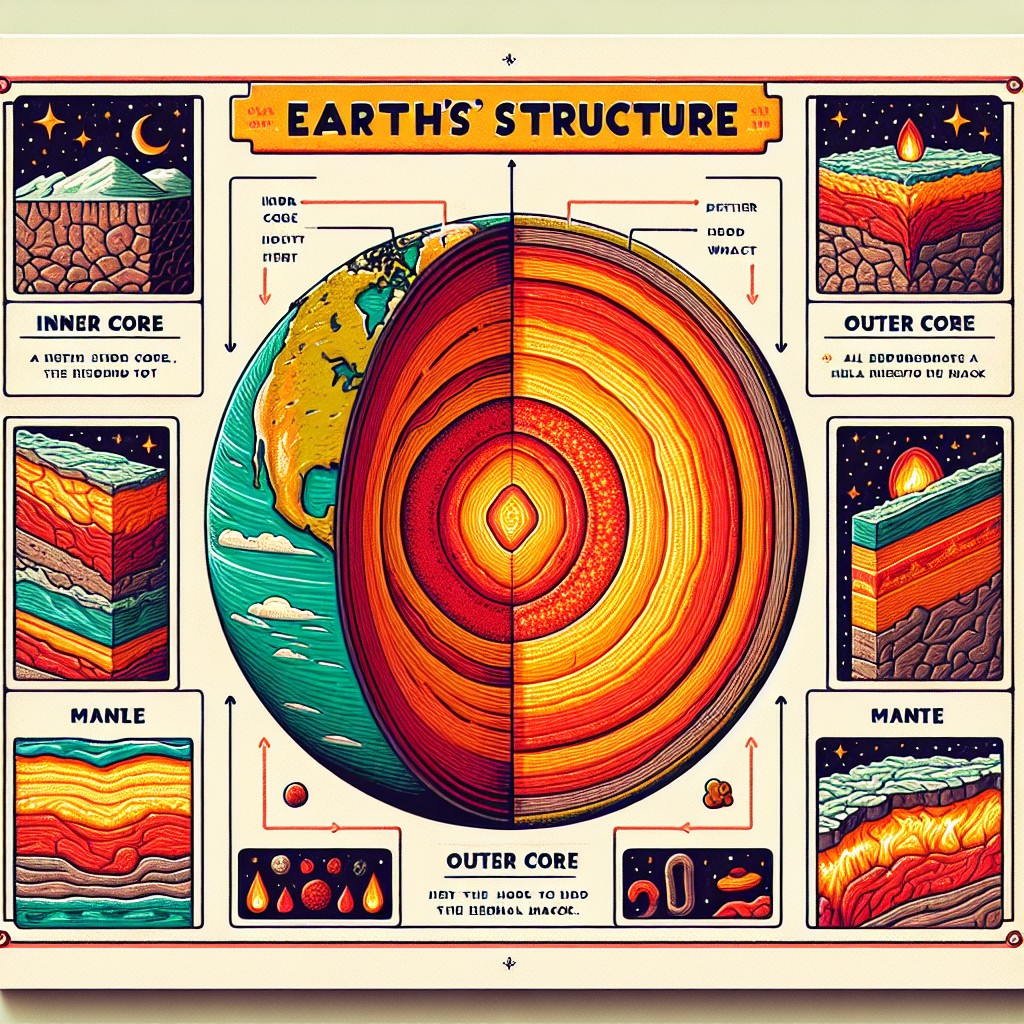


You really want your article to be taken serious with that AI-generated image at the top? At least make an effort and remove/replace the incorrect scribbles.
Hi Dre,
The scribble is an html Iframe that should pull in a dynamic table and map from the world bank database, but they seem to have changed their URL.
Thank you for your advice on the image, I will get a better one.
Many thanks and all the best
Keir